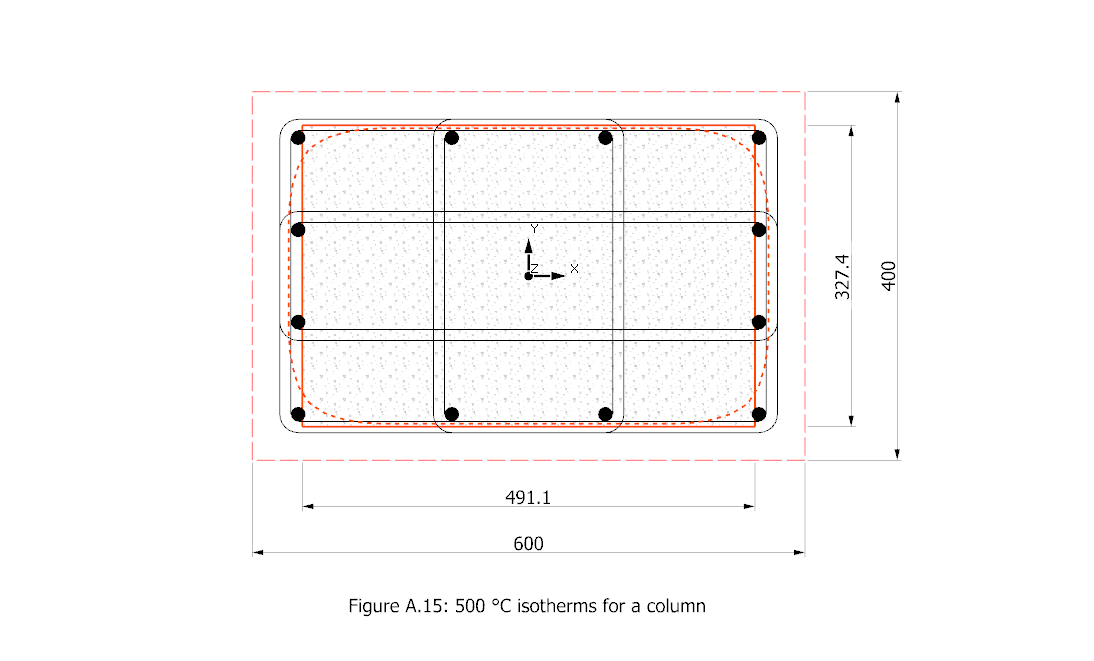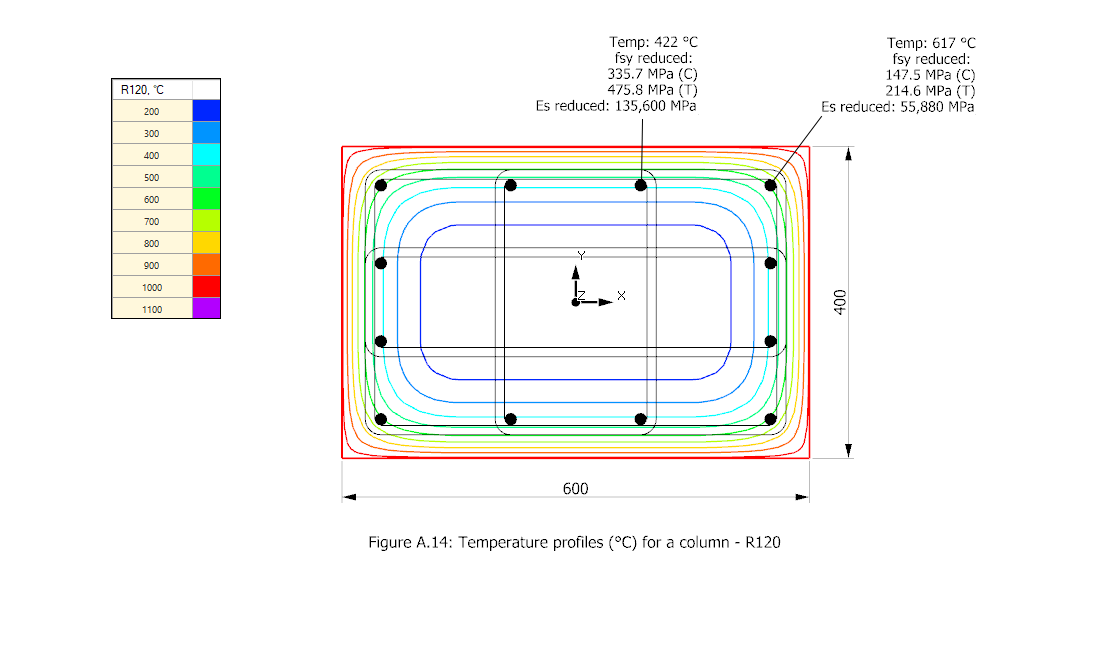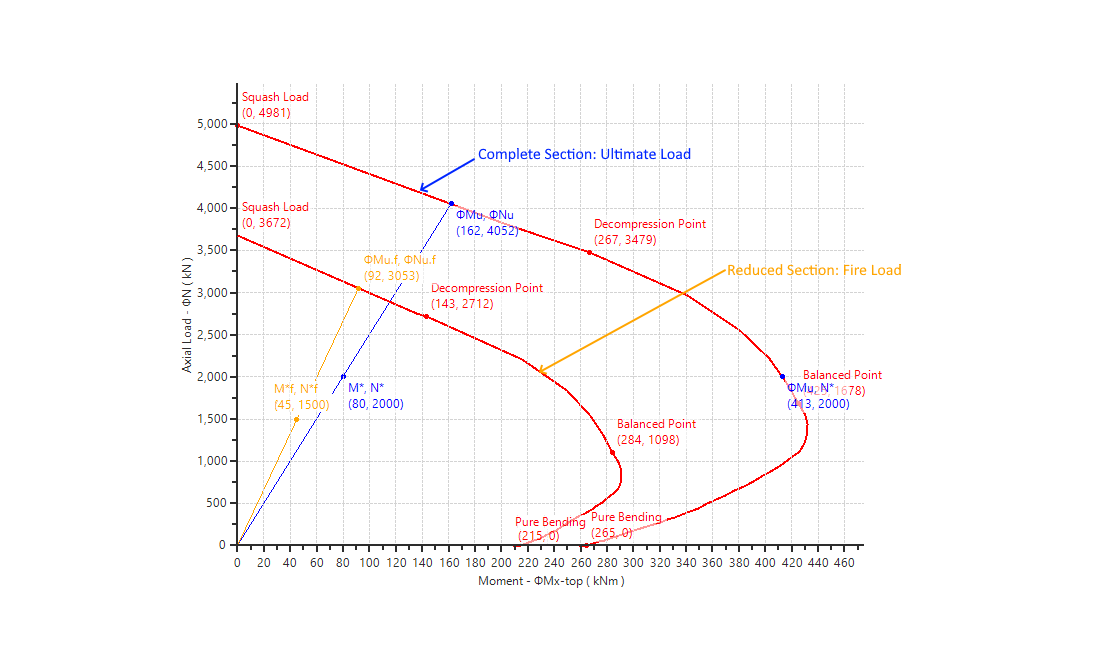Column Fire Design – 500°C Isotherm Method
The INDUCTA software can perform column design, automatically, using direct calculations to the 500°C isotherm method as outlined in Eurocode 2, Part1 - 2. This is in addition to the deemed to comply approach of AS 3600.
Sections of any shape have their 500°C isotherms and temperature profiles automatically determined. The capacity of the reduced column section, which considers reduced reinforcement properties, has its capacity calculated and is checked against the applied fire load.
This feature is available in the RCC software for column design checks and in the RCB software in the column design and schedule tool.
Prior to the 500°C Isotherm update, the deemed to comply approach from AS 3600 was the only option available for fire design of columns using the INDUCTA software. This approach was based on empirical tests (columns with low eccentricity), hence there were strict limits as to when it could be used. As such, it was difficult to get columns with higher eccentricity of applied load, any fixity, to work to AS 3600.
The 2018 edition of AS 3600 (AMDT No. 2) expressly states that the methods outlined in Eurocode 2, Part 1 – 2 can be used as an alternative to the deemed to comply AS 3600 approaches.
The two methods outlined are the 500°C Isotherm Method, which is included in the INDUCTA software, and the Zone Method. The Zone Method is slightly more accurate but would be difficult for the engineer to check and verify. Hence only the 500°C isotherm method was adopted.
The 500°C Isotherm Method works off the assumption that the concrete edges that are exposed to fire will be damaged and completely ineffective up to the 500°C isotherm. The reminder of the concrete section will have the same properties as if it was at ambient temperature.
The vertical reinforcement in the column will be heated and will have its capacity reduced as a result. The temperature and hence capacity of each bar may vary. The reduced yield stress may vary if the bar is in tension or in compression. This is fully considered when calculating the moment – axial load (M-N) interaction diagram of the reduced concrete section.
The capacity of the reduced section is calculated and checked considering slenderness, buckling if applicable and any other checks. This is then checked against the applied fire load. The RCB software will design the section for this load if running the column design and schedule.








